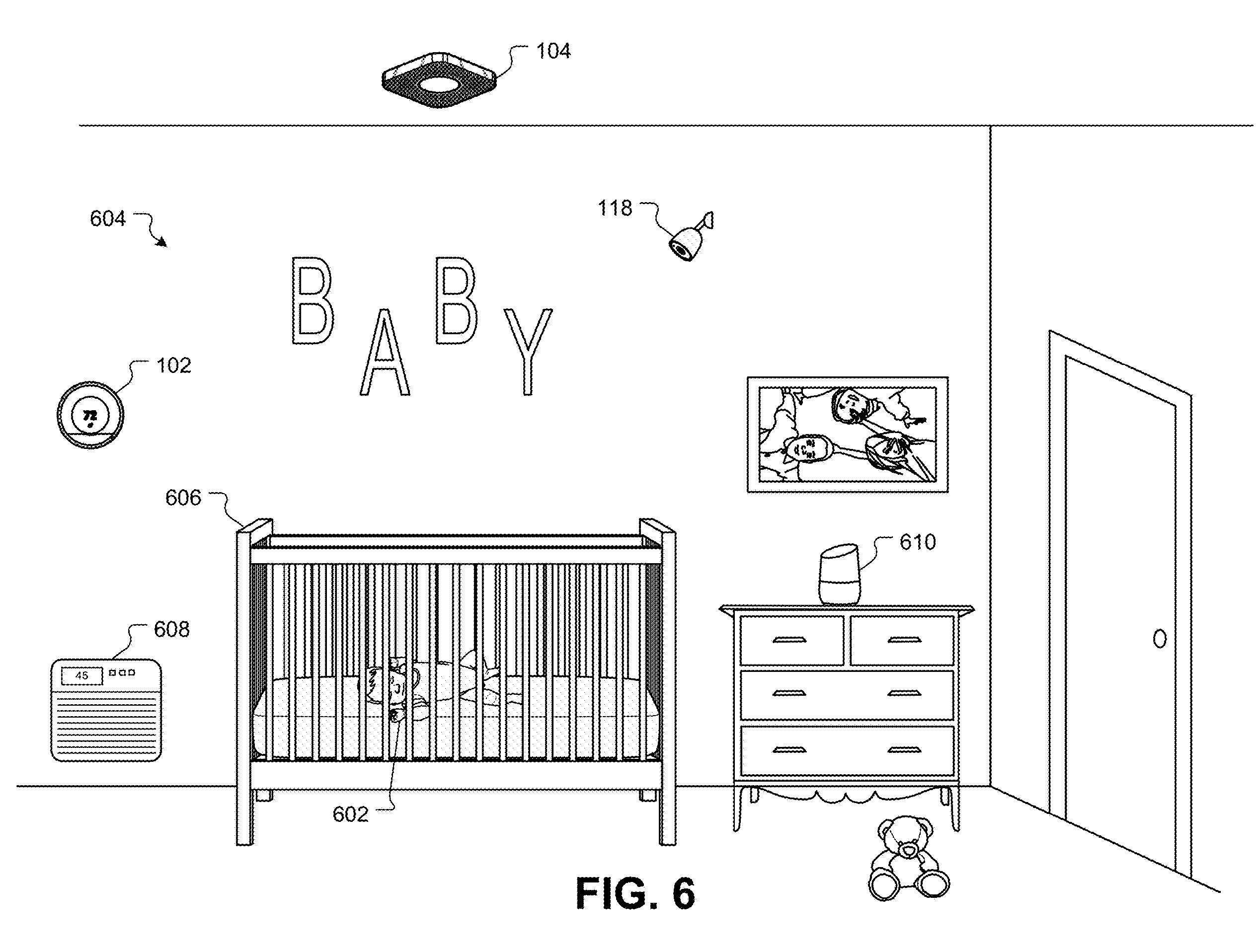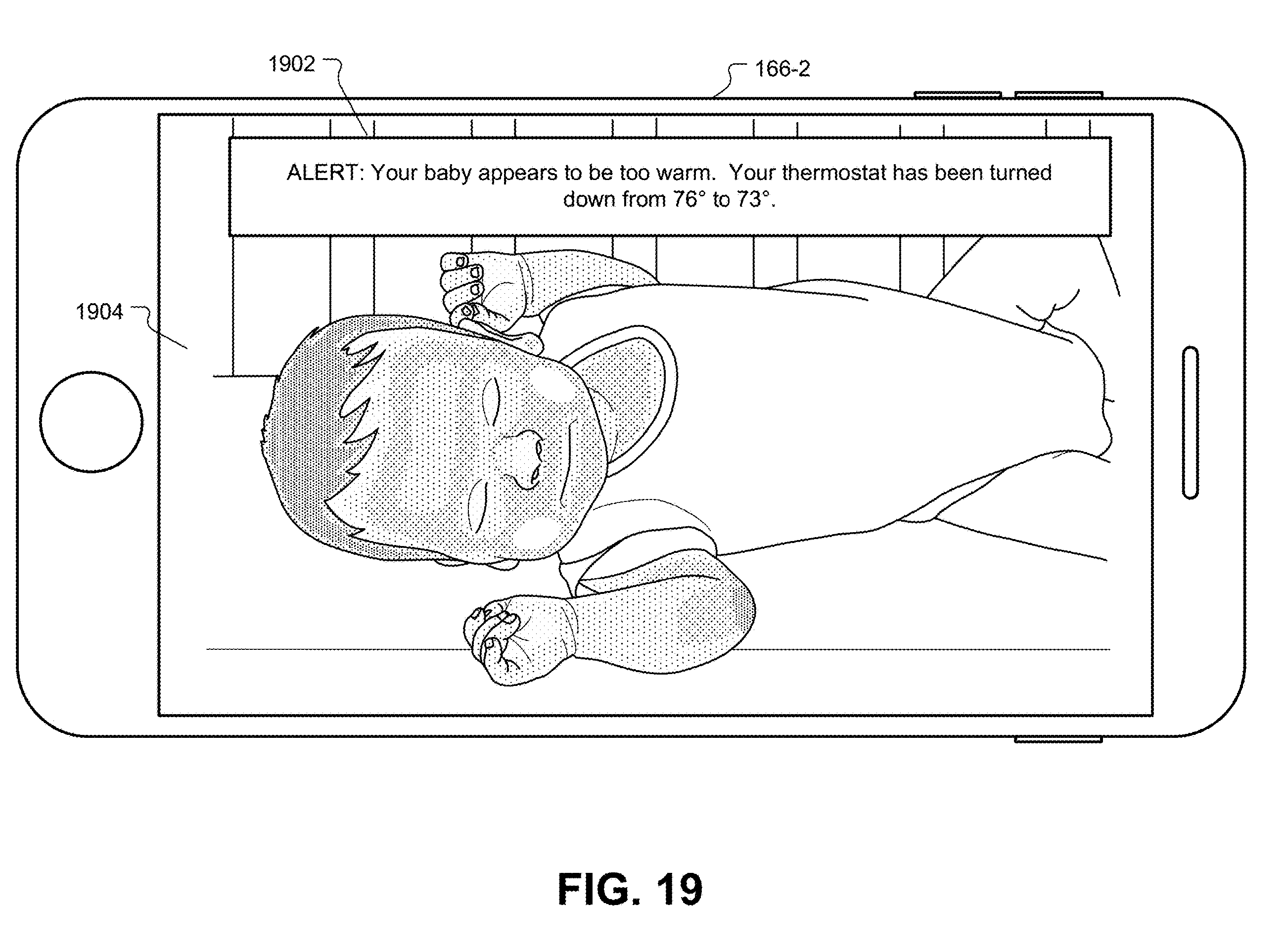Here we have a Google patent application 15/859654 that describes smart home features that actively adjusts environment of a home to maintain a person's sleep cycle. This is particularly relevant to babies, as you can tell from some of the Figures of the patent application.

Cameras with thermal imaging capabilities (to help see in the dark and measure temperatures) can be used to detect whether a person's sleep cycle is being interrupted. An environmental control, such as changing a room's temperature, turning on a humidifier, or activating an air purifier, can be adjusted to prevent or stop the interruption. The system can also automatically turn on sleep aids, such as playing white noise, vibrations, and low-level lighting.
The application further describes that the cameras can analyze the temperature of an infant's face to estimate internal temperature of the infant, and then modify temperature of the room accordingly.

Google's system doesn't just make changes here and there to the environment. Rather, the system continuously monitors and adjusts the environment. For example, the system can make a tweak to the environment, and then continue to monitor the subject to see if the tweak had an effect. While I'm sure that many babies can benefit from such features, I'm confident that none of these features would have worked on my willful boy (no longer a baby) who just would not go to sleep.



